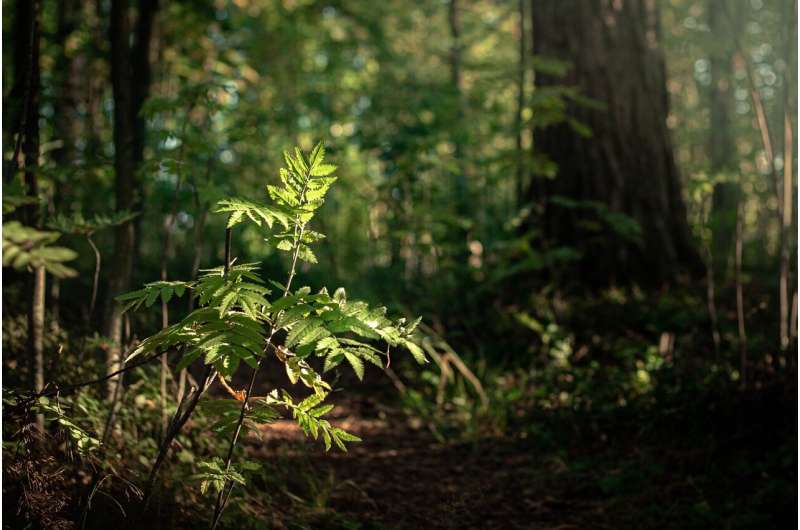Credit: Pixabay/CC0 Public Domain
Remnant trees play an important role for post-disturbance forest landscape recovery. Due to the nucleation of remnant trees in forest recovery, their spatial configuration, e.g., location and abundance, is a critical factor driving forest landscape recovery.
The location of remnants would influence the spatial pattern of seed dispersion and locations of future newly established seedlings, further shaping forest landscape pattern. The abundance of remnants determines the number of seeds, thereby affecting neighboring tree establishment pattern and forest recovery. However, as the key attributes of spatial configuration in remnant trees, the effects of location and abundance have rarely been investigated simultaneously.
A research team led by Prof. Liang Yu from the Institute of Applied Ecology of the Chinese Academy of Sciences has recently reconstructed the post-volcanic-eruption forest landscape in Changbai Mountain, and designed a factorial experiment for location and abundance of remnant trees to quantify their relative effects on forest recovery.
They found that dispersed location and increased abundance in remnant trees significantly accelerated forest recovery. Location of remnant trees had greater effects on landscape recovery than abundance. However, abundance of remnant trees played a greater role on the recovery the late-successional species.
This study offers important management implications that planting individual patches in a dispersed pattern with a larger proportion of late-successional species can facilitate landscape recovery for disturbed forest ecosystems.
The study entitled "Remnant trees location and abundance play different roles in forest landscape recovery" was published in Forest Ecology and Management on March 11.
More information: Mia M. Wu et al, Remnant trees location and abundance play different roles in forest landscape recovery, Forest Ecology and Management (2022). DOI: 10.1016/j.foreco.2022.120154
Journal information: Forest Ecology and Management
Provided by Chinese Academy of Sciences
























